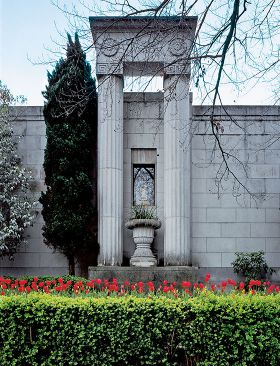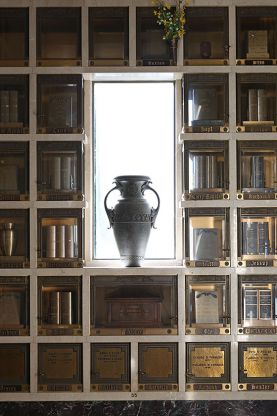About Cremation
Most of us have at some time discussed cremation. The topic arises casually, with family and friends, while hiking or during dinner. Over time, we develop an informal understanding of the process, requirements and rituals around cremation. Below is a description of the process that touches on both the personal and technical aspects of cremation.

PERSONAL REASONS TO CONSIDER CREMATION
Religion
In some religions, cremation is a matter of faith. You may want to talk with your clergy about your faith and the rite of cremation.
Land Use
Some people feel that cremation is a favorable option to full casket interment, since the burial of cremated remains preserves the ritual associated with burial yet does so in a way that uses less space. Others feel that the energy consumed performing the cremation may offset the saving of space, whether the decedent is buried, interred in a niche or crypt, or the ashes of the decedent are scattered.
Natural Processes
After death, the body undergoes natural biological processes of returning to the earth. For some, the ritual of rapidly reducing the body to ash by cremation is preferable to these slower, natural processes. In some philosophies and religions, it is desirable to quickly return the elements back to nature.
Memorial Services
There can be confusion about which funeral services are available before, during or after a cremation. Sometimes families mistakenly believe that choosing cremation means foregoing funerary rituals that celebrate the life of a family member or friend. Before a cremation, all the rituals, such as an open casket viewing or visitation and church service are available. For some, it is desirable to be present during the cremation itself and while the funeral “pyre” is no longer an option, family and friends can accompany the decedent to the cremation facility and be present before, during and after the cremation as they choose. Our crematory charges a fee for witnessing, to cover their need for additional staff during the process. Once complete, a memorial service with the urn present, or not, is held at a place of gathering and food is often served afterward. As with a funeral, photos, videos, music, and personal mementos of the decedent can make the service into a thoughtful, personal memorial.
TECHNICAL INFORMATION ABOUT CREMATION
To help with personal and philosophical feelings and questions about cremation, families often want to better understand it from a technical point of view. Below are excerpts from California State law that were adopted, in part, to better educate consumers about these concerns.
Again, these are excerpts of California Code and they are not intended to cover every circumstance. If you have questions about cremation, please call or visit us.


A General Description and Definition of Cremation (Section 7054.7 of California Health and Safety Code): “The human body burns with the casket, container or other material in the cremation chamber. Some bone fragments are not combustible at the incineration temperature and, as a result, remain in the cremation chamber. During the cremation, the contents of the chamber may be moved to facilitate incineration. The chamber is composed of ceramic or other material which disintegrates slightly during each cremation and the product of that disintegration is commingled with the cremated remains. Nearly all of the contents of the cremation chamber, consisting of the cremated remains, disintegrated chamber materials, and small amounts of residue from previous cremations, are removed together and crushed, pulverized, or ground to facilitate inurnment or scattering. Some residue remains in the cracks and uneven places of the chamber. Periodically, the accumulation of this residue is removed and interred in a dedicated cemetery property, or scatter at sea.”
© Piedmont Funeral Services & Mountain View Cemetery | Oakland, CA - Funeral Home Website Design By Frazer Consultants & TA